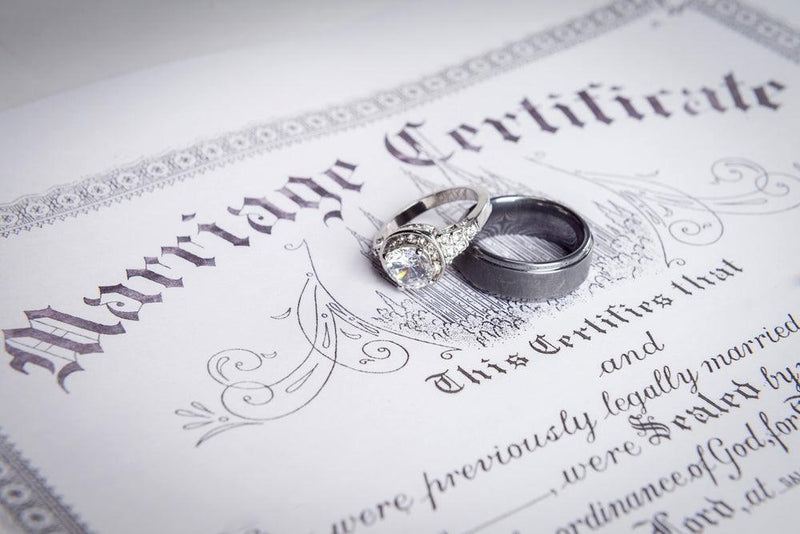Name Change After Marriage Checklist… for Husband or Wife
December 06 2020 – Mike Yarbrough

The tradition of a new bride taking her husband's name has a long and, at times, complicated history. Still, it's a tradition that most newlyweds—even those who have a taste for the unique and the non-traditional—continue to uphold. In many ways, sharing a name can represent the merging of your two lives—your two stories—into one.
If you're about to get married, you have probably given this quite a bit of thought. You may also be wondering how the whole process of legally changing one's name works, in which case, we're here to help!
History of the Name Change Tradition
The tradition of a woman taking her husband's surname after marriage began in Europe in the 9th century. It was around this time that the Doctrine of Coverture emerged, a legal tradition in which the woman would legally become one with her husband once married, a change that was signified by her taking his name.
If that sounds overly romantic, it's worth noting that the real effect of coverture in those days was that women's legal rights were effectively subsumed by those of her husband. Once a woman married and took her husband's name, she would essentially have no independent legal identity apart from her spouse.
These days, thankfully, women have many more rights than they did in 9th century Europe. They are no longer required by law to adopt their husband's surname, nor are they considered their husband's property. The law has caught up to our times, slowly but surely.
Who Can Change Their Name After Marriage?
Most women still choose to take their husband's last name when they get married—about 70% of women in the U.S. and 90% in Great Britain, according to a recent study. Whether or not you choose to do so is entirely up to you.
Legally speaking, either party is free to take the other party's last name after marriage. While most women choose to take their husband's surname, the husband is perfectly free to take his wife's surname if he so chooses, even though this is exceedingly rare. Some couples may choose a hyphenated last name blending the two together.
Name Change After Marriage Checklist
The first step—and it's one you should take long before you get married—is to have a chat with your soon-to-be-spouse about who is or isn't going to take the other's name. Once you have that all straightened out, here's how you go about making the change:
1. Get your marriage license. You'll need an original or certified copy of your marriage license to begin the name change process (it should have a raised seal).

2. Change your Social Security card. Your social security number will stay the same, but the name on your social security card will be different. Fill out the application from the Social Security Administration's website, and then mail it in to your local Social Security Administration office.
3. Update your license or ID at the DMV. Once you have your new social security card, it will be easy to change the name on your driver's license or state-issued ID.
4. Update your passport. If you plan on traveling outside the US, you'll need to update your passport. If your passport is less than a year old, it's free! Otherwise, there will be a small processing fee for your new passport.
5. Change your voter registration information. You'll have a hard time voting if the name on your ID doesn't match your voter registration! Visit vote.gov to make the change.
6. Update your name with the post office. You don't necessarily have to inform the post office of your name change. But if you've moved after getting married, they'll need your new address.
7. Update your bank accounts. This typically requires a visit to your local branch with your updated ID. Be sure to check with your bank to see if they have any other specific requirements, and ask about getting new checks and updating your credit/debit cards while you're there.
8. Update other personal accounts. Chances are, you have tons of other accounts you'll need to update over time. These include updating your medical providers, insurance companies, utilities, employer/work info, email accounts and likely quite a few others. You'll get to them all in good time!
Here at Rustic and Main, we still have plenty of respect for traditional marriage customs, but we also like to do things a little differently when it comes to wedding bands and engagement rings.
Send us an email at team@rusticandmain.com to talk to our creative team of wedding ring craftsmen about all the ways you can blend the traditional and the unconventional to tell your love story in your own way.

